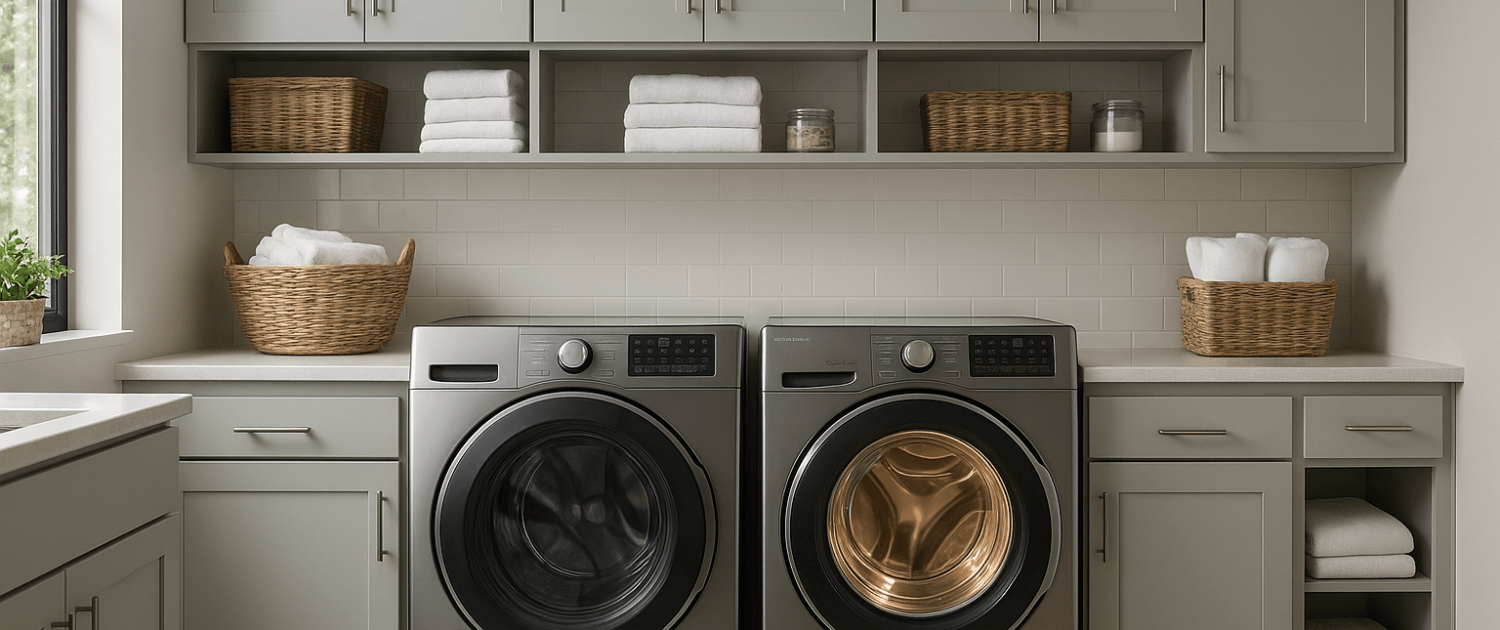How to Test and Replace the Drive Belt on a Samsung Dryer
Steven E / Thursday May 29, 2025
Ever tossed in a load of laundry only to find your Samsung dryer making a strange thumping noise, or worse, not tumbling at all?
A worn or broken belt is often the culprit, and with a few simple steps, we’ll show you how to test and replace it yourself.
If you need any replacement parts for your Samsung dryer, you can enter your model number at AppliancePartsPros.com to order them. Most orders arrive in just two business days, and we have thousands of free guides to show you how to install your new parts.
The information in this article may not apply to your specific appliance model. We recommend consulting your manufacturer’s documentation or contact us with any questions.
What you need
- Phillips screwdriver
Safety precautions
When working on any appliance, always keep safety first to avoid personal injury or damage to the appliance or its parts. Here are some tips to keep in mind:
- Always power off and unplug your appliance or switch off the circuit breaker before you attempt any maintenance or replacement work. This keeps you safe by eliminating any risk of electric shock.
- If the appliance has recently been used, give it plenty of time to cool down before working on it.
- Take your time while working to prevent accidents and personal injuries. Rushing is the enemy of precision.
- Work in a well-lit area so you can see and access appliance parts.
- Keep your workspace free of clutter and other obstacles. Keep children and pets away from the work area.
- Never work on internal parts with wet hands. Make sure the work area is completely dry.
- Check the user manual to see if there are specific installation or safety instructions related to your appliance or replacement part.
- Be gentle when handling or removing parts. Excessive force might damage the appliance or cause personal injury.
- Wear insulated work gloves to protect your hands from sharp metal parts and debris.
- When working with wires, avoid touching any exposed wires or terminals. If you need to touch a wire, use a non-conductive tool or wear insulating gloves to prevent electrical shock.
- Always take photos or make a note of wiring terminals or other connections before disconnecting them to make reassembly easier.
- Don’t test live voltage with a multimeter if you’re unfamiliar with how to prevent short-circuiting.
- Consider wearing safety glasses and/or a dust mask when working with chemicals, dust, or a large amount of debris to prevent irritation or injury.
- Turn off the water supply at the outlet before beginning repairs. Keep towels ready to catch any residual water in the system when removing parts.
How to test and replace the Samsung dryer’s belt
Below are the steps to check the condition of the dryer belt and replace it if necessary.
Check the belt condition
- Disconnect power to the dryer by unplugging the power cord or turning off the circuit breaker.
- Use a Phillips screwdriver to remove the two screws securing the top panel at the back of the dryer.
- Slide the top panel backward, lift it up, and set it aside.
- Lift the belt at the top of the dryer drum to check its condition. If it lifts easily, pulls out completely, or appears loose and stretched out, it should be replaced.
Remove the old belt
- Disconnect the wires behind the console on the right.
- Lift the console up and pull it away from the dryer.
- Feed the wires through the top bracket and set the console aside.
- Use a Phillips screwdriver to remove the two screws behind the door in front of the lint trap.
- Remove the four screws securing the top of the front panel.
- Slightly lift the front panel, rotate it forward, and disconnect the door switch harness.
- Completely remove the front panel and set it aside.
- Remove the lint filter and set it aside.
- Unlatch the wire retainers from the wire harness.
- Disconnect the wires from the drum lamp.
- Remove the four Phillips screws securing the front bulkhead.
- Disconnect the sensor bar wire connector.
- Remove the screws securing the lint duct.
- Pull the lint duct down and set it aside.
- If the belt is stretched out and loose, reach back and remove it from the idler pulley.
- Lift the front bulkhead up and pull it forward.
- Lift the drum off of the rollers and set the bulkhead aside.
- Slide the belt forward and remove it from the dryer.
Install the new belt
- Slide the new belt onto the drum, lifting it at the top to align it with the original belt placement.
- Attach the belt to the motor and idler pulley.
Reassemble the dryer
- Install the front bulkhead and secure it using the Phillips head screws removed earlier.
- Reconnect the sensor bar wires.
- Install the lint filter housing.
- Reconnect the drum lamp wires.
- Position the front panel by guiding it onto the bottom hinges.
- Connect the door switch wires.
- Rotate the panel into place and secure it with the screws removed from behind the door and at the top.
- Place the console back on the dryer.
- Guide the wires through the top plate, push the console into position, and reconnect the console wires.
- Slide the top panel onto the dryer and secure it with the final screws.
- Plug the dryer back in or turn the breaker back on to restore power.
You made it!
Thanks for reading! We hope this guide helped you test and replace the belt in your Samsung dryer.
If you still need some replacement parts, grab your model number and head over to AppliancePartsPros.com. We have over two million parts in stock and most orders arrive in two business days. If you need some help with finding the right part or placing an order, you can contact our team at 1 (877) 477-7278.
While you’re waiting for your new part to arrive, you can explore our DIY blog and watch thousands of video tutorials on our YouTube channel.
Follow us on Facebook, X and Instagram to see our latest repair guides!
With nearly a decade of experience in providing top-notch customer service regarding appliance parts and repair, Steven enjoys sharing practical advice, troubleshooting tips, and interesting information to help readers stay informed.





